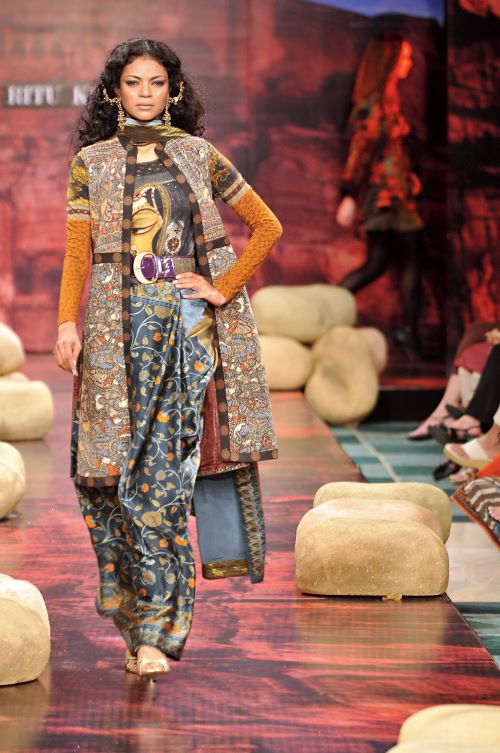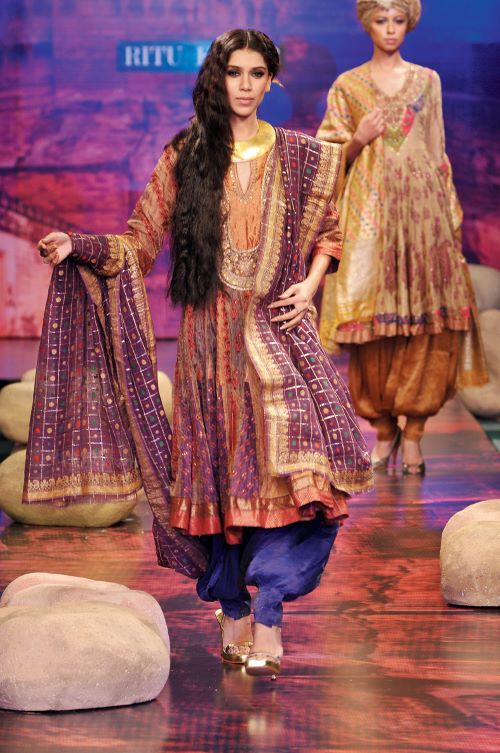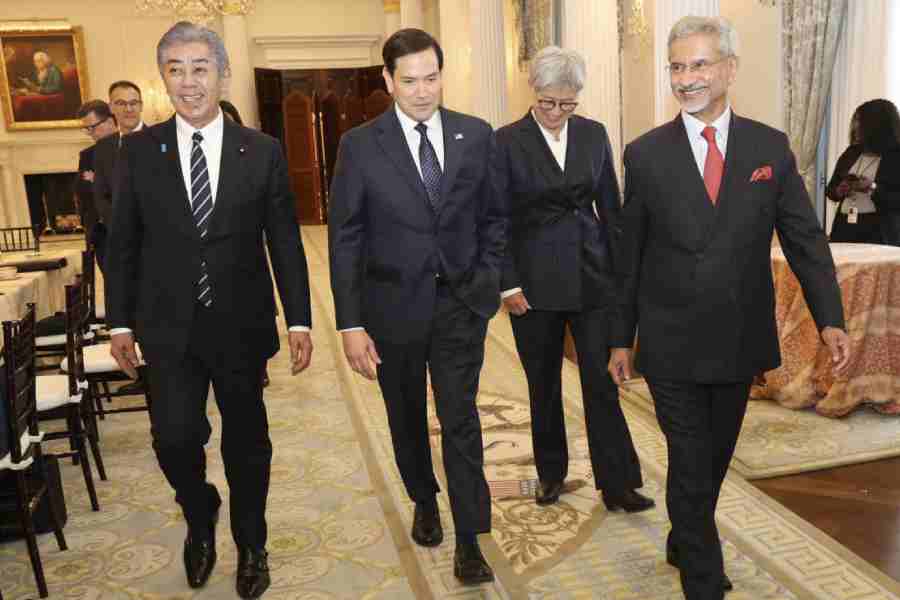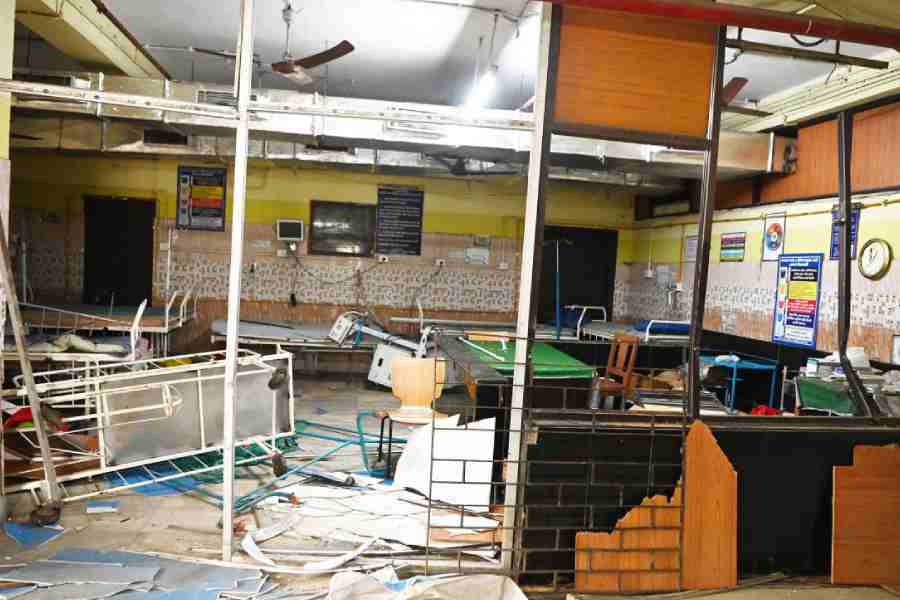She launched Calcutta’s first ever ‘designer wear’ outlet in a tiny room on Wellesley Street. More than 50 years have passed since then. Ritu Kumar still remains relevant, is more than ever busy and every bit the fashion doyen. So, when she tells you that she can’t believe that she is sitting and looking at trees and “loving it”, in what would otherwise have been frenetic months, you feel the real reverberations of the pandemic. The Telegraph caught up with her on a June afternoon over phone. Extracts...
You are someone who is constantly travelling and working. How has life been in the past three months?
Actually, I didn’t quite realise how to take this... how the telephonic conversations, the Zoom calls would be. They have been very effective. For two months, we have been totally locked out of the office and are at home. So, I have been using the time to write my book and articles. One has had time to really rethink about what we are doing to our lives and to the world and how much of this is going to affect us and how much of this is so necessary for us. I don’t see that much. Particularly in the fashion world, you have to rethink your priorities.

Taapsee Pannu Pabitra Das and Sandip Das
Where were you just before the lockdown?
Just before the lockdown, I was in Paris. Then I was in Bombay for a show where I walked the ramp for sustainable fashion, came back here (Delhi) and was in the studio literally that morning and then I came home and they said it’s lockdown. No time to even hand over or anything because we were just given four hours to lock down. Having said that, I think the pace of life has changed. I have started doing a lot of my yoga, exercises and writing a book that has been on the back-burner for too long.
Since it’s opened, I am told not to go out yet because Delhi is peaking in a bad way. I am working from the house. The photographs come here. I send it on WhatsApp. So far so good, but I don’t know how long is it going to take for people to start acting normal because nobody really wants to risk going out.
What are these months like for you normally?
You know, summers are so busy because the designers are here from Europe because we do an export line as well. They are here in May because the collection has to be shown in September and it is hectic. I am doing the winter line for the bridals as well as the normal line... it’s madness. I actually cannot believe that I am sitting and looking at the trees and in some ways I am really loving it.
What kind of a collection were you planning and will that change now?
Frankly, we are just about opening. Our last collection was halfway through but fortunately in India, we don’t have winter, summer. Just the colours change. We had already been planning for the winter. We are hoping that people come back and we can complete that collection. I think most companies would have had a complete season’s loss. This is a very in-between time right now.

Perhaps we are all learning to live with the wardrobes we have. In India, we’ve never really had the money to afford wastage of fashion. In India, it’s always been buy something for the wedding which you can give to your daughter when she gets married. I think we will slowly get back to a more classic way of thinking: Ritu Kumar Pabitra Das and Sandip Das
What is on your mind right now?
We are going classic. We are not doing anything which is too fast fashion. We are not doing anything which will have to be chucked out of the wardrobe if the season changes because I think I would like to retain an amount of handwork as much as we can to ensure that at least the wheels keep going round.
Do you think luxurywear would change?
I think it is the other way round. I think occasions to wear luxury will be very few for the foreseeable future. Events which are going to have lots of people and lots of interaction, till we see the end of this pandemic, are going to be really conservative. Even at the moment you are allowed only 50 people at the wedding which you can have inside your house. No venues are being booked. People are wanting to come to us and see what they can pick up and none of these are very long-term orders. That seems to be the trend. And the best is that people are preferring the Internet. The fear of being unsafe is not there. And it is not only in India that we are getting a lot of requests. There is international interest too because people are not coming to India this year.
The brand has been a lot about touch and feel… do you miss that?
If they have a choice they would definitely like to touch and feel. No question about it. Even I would, but it’s just that people are now in a situation where they have a wedding next month and the whole family can’t come shopping… it’s not totally out of choice, but necessity. We hope it goes away soon because this is a very awkward and uncomfortable time in the whole world. And, this is the first time this has happened. We have been in this business for 50 years. When the export was good, the retail market sat down a little. When the retail market picked up, the export market was a little down. This time, internationally, the same thing has happened to everyone. We don’t see a ray of hope in either people travelling a lot, big weddings or having large orders from the people whom we work with. Even places like Dubai and everywhere have also gone down flat.
What were your initial concerns as a designer and someone who has a business to run?
Like everybody else, we wanted to keep it going. We wanted to be able to pay salaries and didn’t want to let peoples leave their jobs as much as you could, to keep the place together and running... but the longer it goes, the more difficult it becomes. I am hoping slowly (things get back to normal), but it’s totally dependent on the pandemic. When people start feeling more confident, like they are in Kerala or Punjab where there is no such scare, people are beginning to come.
Have you scaled down production?
We just opened a week back and there was hardly any labour there and we had to complete what we were doing. Then we are going to be thinking about newer work.
Have you reached out to your weavers?
Yes, of course, almost always on a daily basis because most of our people work out of their homes in Bengal. So, we try to deal with it as often and as much as we can, till such time our stores open. So far I think it’s not so bad.
They are in touch over the phone with the head office in Calcutta, almost every day. We are keeping something going all the time. They are getting their pay, which is very good. That’s all that they want. They have produced thousands of masks for the slum areas around our factory in Delhi. We manufactured in the time that we were locked down. We got the permission to open with eight workers and they began making 500 masks every day.
I have worked with them for 30 years. They are not telling me so much about us because they know it’s going where. It’s just that the market is in a bit of an emergency and they are worried that they would get stuck with the stuff and the payments won’t come.
For someone who has been in the industry for more than 50 years, what is that you want from the government?
It’s not about what I want, but what I think they should be doing… not get the emporia and the government to sell pieces, retail handloom. They have to look at it like a start-up. It has an enormous potential, but handloom and handicrafts do not have the potential to be able to pay very high overheads of malls. They could set up a start-up which could devise a way of getting the production from the weaver or the embroidery person, facilitate it through web-selling and get it to customers and take some sort of a percentage on it. The middleman in this situation, I think, is not going to get extinct. It isn’t that it hasn’t before. It has happened in the ’50s when the government came in, in a big way and they made sure these lasted. It can surely happen again. And, I think this is a time we cannot really leave it because then we will lose our handicrafts altogether. This is not cheap labour. This is qualified labour. And, it is an unnecessary waste of DNA.

We are going classic. We are not doing anything which is too fast fashion. We are not doing anything which will have to be out of the wardrobe if the season changes because I think I would like to retain an amount of handwork as much as we can to ensure that at least the wheels keep going round: Ritu Kumar Pabitra Das and Sandip Das
Being almost like a parent figure in the fraternity, what is your suggestion for all the designers?
If you really ask me and it might come across as a bit of a shock, the Indian fashion industry just works as a catalyst. The Indian fashion industry is far too small to do anything but become a driving force of an aspirational garment. And, when people look at that, they want to copy it. They are not going to have it at that price… they will get it for a couple of thousand rupees in Metiabruz or in the haat, but the aspirational quality is what Indian fashion drives. We can continue with that effort. There will always be people who would want the top end of the line.
Are you okay with a digital fashion week?
There is nothing like an actual live performance, but if that’s the need of the hour and people want to show their stuff, that would probably be a marginal solution.
Life as you see today through the fashion lens… what is it looking like at the moment?
Simpler. Perhaps we are all learning to live with the wardrobes we have. In India, we’ve never really had the money to afford wastage of fashion. In India, it’s always been buy something for the wedding which you can give to your daughter when she gets married. I think we will slowly get back to a more classic way of thinking, which would be very sound for us because we don’t like waste. Now more than ever that the reality has come down… because we are going to go through some sort of a recession. Health is going to be more important than clothes.
What book are you are working on?
Well, I am putting down all my travels in the world of textiles in India. If you want to go to the villages next to Calcutta, you’ll know where to go and where to start working from. You’ll know where each weaver is. There are piles of notes from over 50 years, since the time of my first revival… Ranihati and Serampore near Calcutta. They are in bullet points! I remember the most important points. I think it will take a year. The bright side of (this lockdown) is that I have done a lot of work on it.
What is your takeaway from this experience?
The children came… they were saying even they have nothing to do… so, lot of bonding… eating together… a lot of cooking…. Family time, reading time, writing time!











